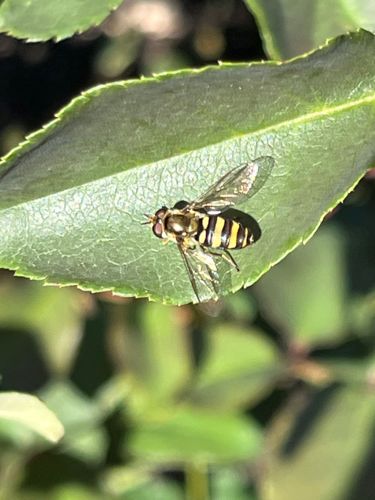Hoverfly, Flower fly
Scientific Name: Syrphidae (family)
Order & Family: Diptera (Order), Syrphidae (Family)
Size: 4 mm to 25 mm (0.16 to 1 inch)

Natural Habitat
Gardens, meadows, forests, and other areas with flowering plants; often found near aphid colonies.
Diet & Feeding
Adult hoverflies feed on nectar and pollen from flowers. Larvae of many species are predatory, consuming aphids, scale insects, and other small, soft-bodied invertebrates. Some larvae are detritivores, feeding on decaying organic matter.
Behavior Patterns
Hoverflies are known for their remarkable ability to hover in mid-air, often resembling small bees or wasps (Müllerian mimicry). They are active during the day and are important pollinators. The females lay eggs near colonies of aphids, so the hatched larvae have an immediate food source.
Risks & Benefits
Hoverflies pose no risk to humans; they do not sting or bite. They are highly beneficial insects, acting as important pollinators for many crops and wild plants. Their predatory larvae are significant biological control agents, helping to reduce populations of agricultural pests like aphids, thus reducing the need for chemical pesticides.
Identified on: 10/20/2025